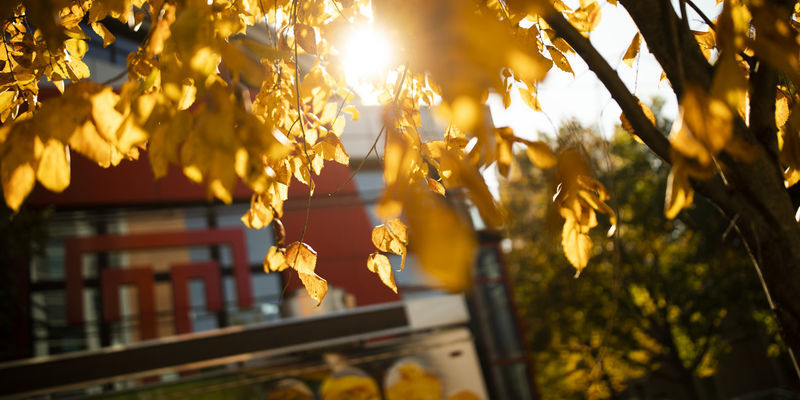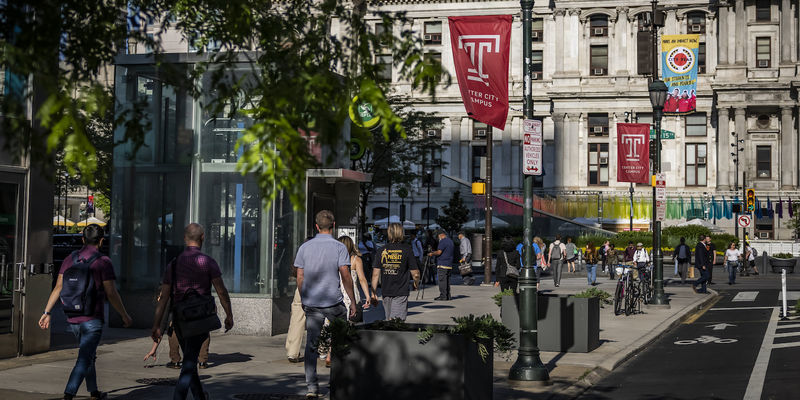A primer on the state appropriation
Beyond tuition revenue, the commonwealth appropriation serves as the primary driver of Temple University’s budget.

Today, Temple University President Richard Englert will head to Harrisburg, where he will again advocate on behalf of Pennsylvania’s state-related institutions. During a hearing of the House Appropriations Committee of the Commonwealth, he will make the case for continued commonwealth support.
The university’s operating budget—which finances the day-to-day, ongoing operations of the university—is almost entirely driven by tuition revenue. The other primary driver for the budget is the appropriation from the commonwealth.
“The state appropriation makes up about 13 to 14% of our operating budget, so it’s a huge driver,” said Jaison Kurichi, Temple’s associate vice president for budget and planning. “We leverage that $158.2 million to turn it into more than $270 million dollars worth of tuition discounts for resident students from Pennsylvania. When you compare it to our nonresident undergraduate rate, it is easy to see the significance of that appropriation.”
Each year, the state’s funding from the appropriation is combined with resources provided by the university to provide $270+ million in tuition support for Pennsylvania residents. As a result of this investment, Temple provides every undergraduate in-state resident with at least a $14,400 annual discount on tuition.
“One of the reasons that the our legislators always want to support Temple is because of the proven value of our academics,” said George Kenney, Temple’s senior advisor for government affairs. “If you come to Temple, you are going to get a good education and then you’re going to get a good job. Plus, with 64% of our students coming from Pennsylvania, it is likely that you’re going to get a job here in Pennsylvania and ultimately help stimulate this economy.”
As President Englert prepares to testify before the Pennsylvania House of Representatives, the appropriation has never been more important.
For the last five years, the appropriation for Temple has remained at $158.2 million. And while the appropriation has remained flat, all operating costs, such as utilities, salary/benefits and insurance, have increased.
In addition to the challenges presented by a flat appropriation, Temple’s budget has also been affected by enrollment declines, which have been a consistent theme in the Northeast following the COVID-19 pandemic. This year, Temple’s total enrollment is 30,530, but just six years ago, in the fall of 2017, the total was 40,240. This decline of nearly 10,000 students translates to a reduction of approximately $200 million in gross tuition.
“To be very clear, we are incredibly thankful that we get the $158.2 million a year, and that cannot be overstated,” Kurichi said. “However, given that there are inflationary pressures every year, if we do not receive an increase in the appropriation, then we have to make up for that by increasing tuition at a greater rate than we normally would, so that is one of the main reasons that we have had to implement the increases that we did over the last couple of years. So ultimately, it comes down to increasing tuition or reducing services by cutting the budget, but we never want to do that too much, as that ultimately hinders the student experience.”
Temple held tuition flat in both 2019–2020 and 2020–2021, and while there have been modest increases since then, Temple has worked to keep tuition as low as possible, reducing expenses by approximately $170 million since fiscal year 2021. However, further cuts become more and more challenging.
More than 15 years ago, during the 2009-10 fiscal year, Temple’s state appropriation was $175.1 million. Within a few years, it was reduced to $139.9 million, and it has never reapproached its peak from 2009 despite near unprecedented levels of inflation in recent years.
In the time since then, the state appropriation has either only slightly increased or remained stagnant, but Temple has continued to issue salary raises to thousands of employees on a near-annual basis, with the outlier being the 2020 pandemic year.
For context, according to the U.S. Bureau of Statistics, Temple would need to receive an additional $63.6 million in its appropriation to keep pace with the 2011 appropriation.
Presently, Pennsylvania ranks 49th in appropriations and attending college in Pennsylvania costs 69.6% more than the national average cost of attending a public four-year institution. This year, Governor Josh Shapiro has requested a 5% increase to the appropriation for Temple and its state-related peers: Penn State University, the University of Pittsburgh and Lincoln University.
While an increased state appropriation would be beneficial, Temple continues to work to meet its enrollment challenges and is employing a number of unique strategies to do so. To that point, earlier this month, the university launched the Temple Promise program. This new last-dollar financial aid award program is now available to all qualifying admitted first-year, full-time students residing in Philadelphia County and is key in making a Temple education more accessible and affordable for the best and brightest students regardless of their financial means.


